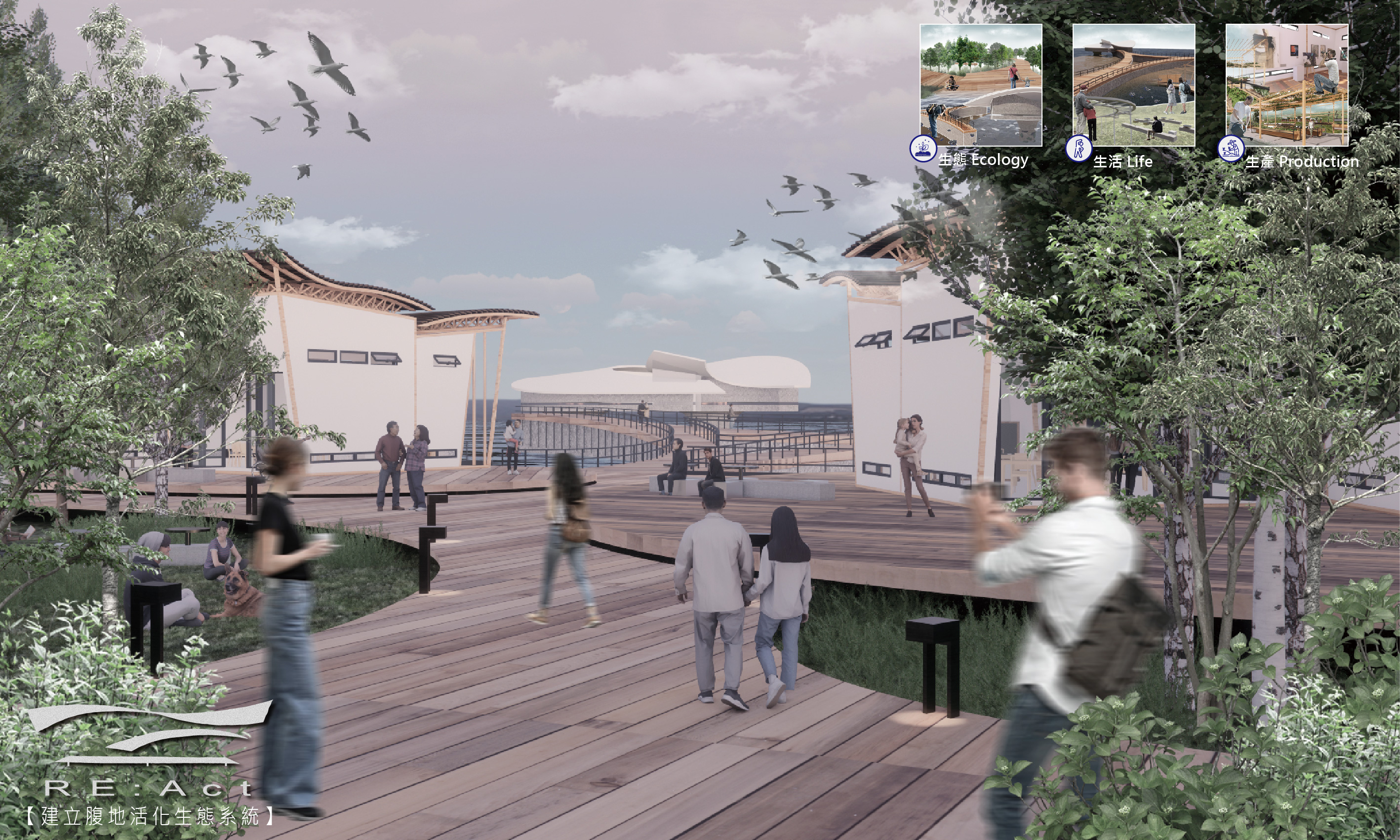
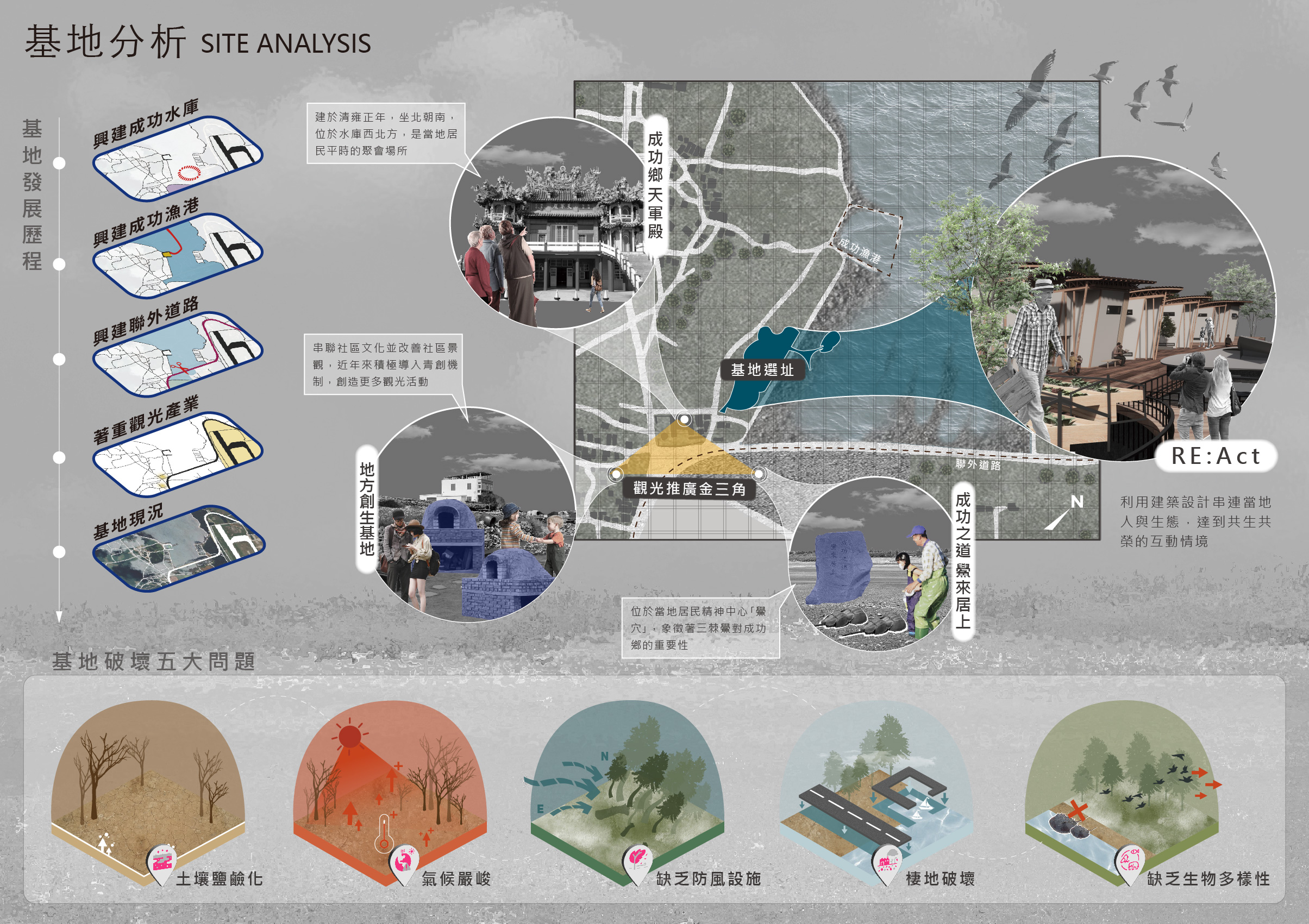
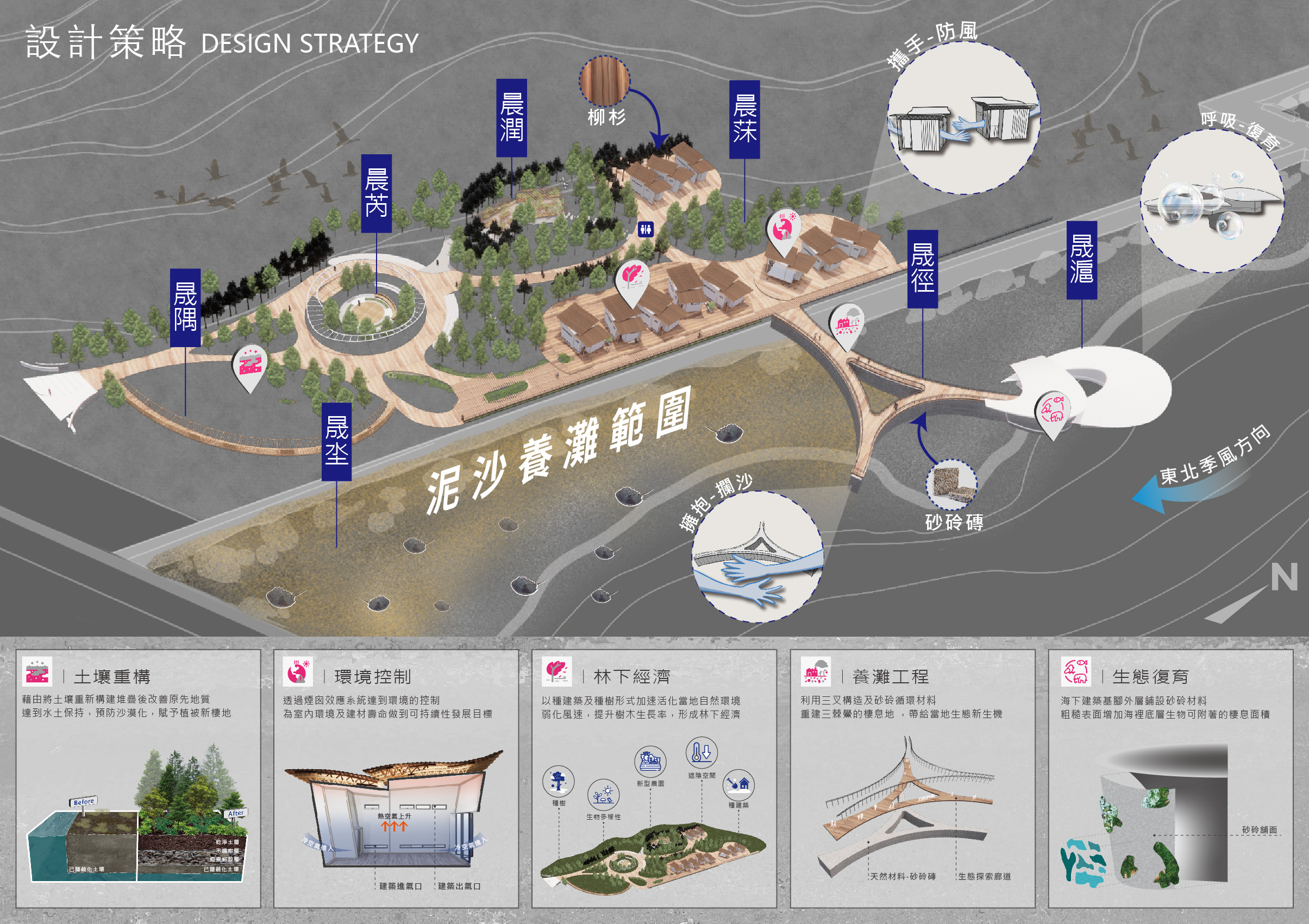
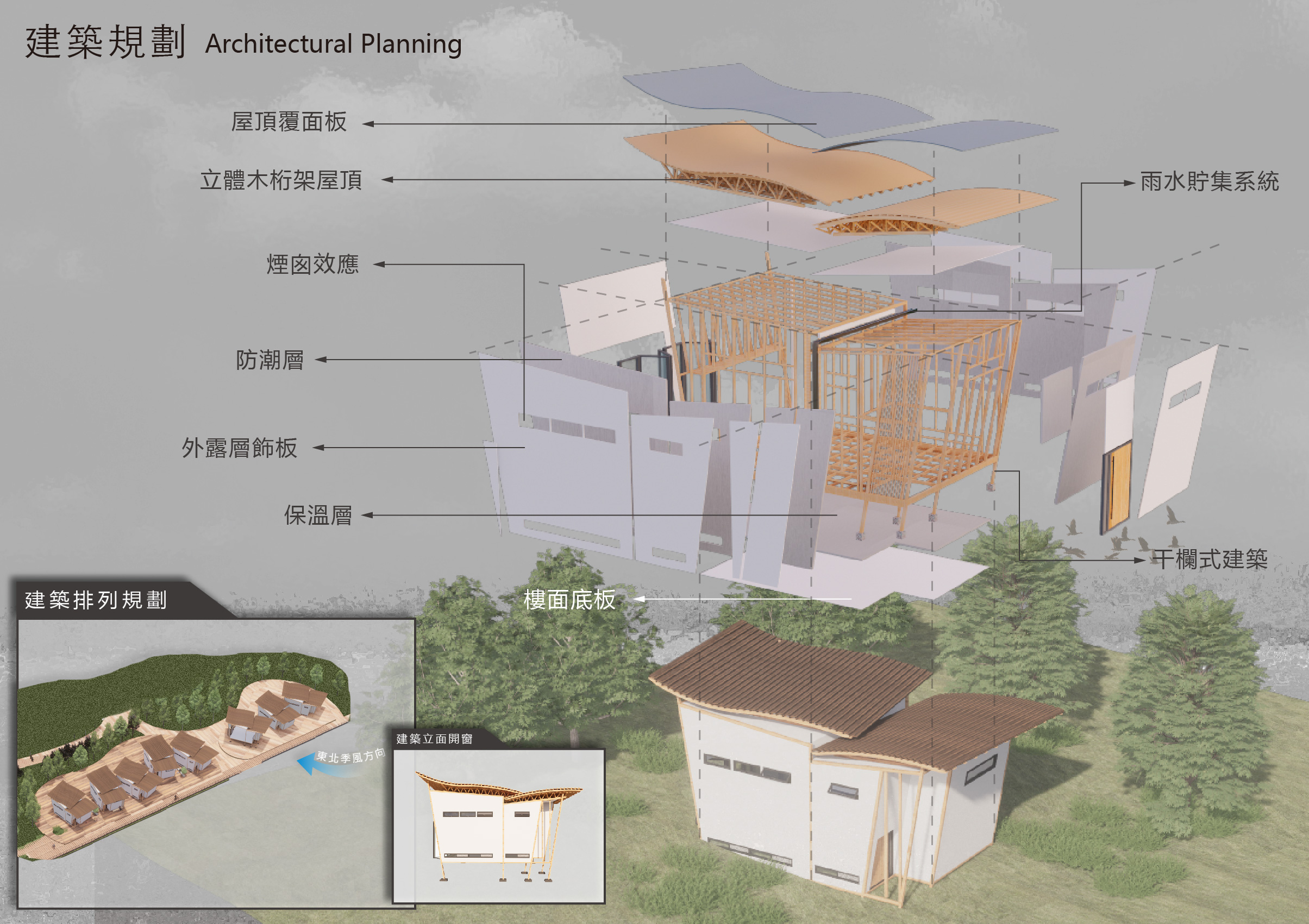
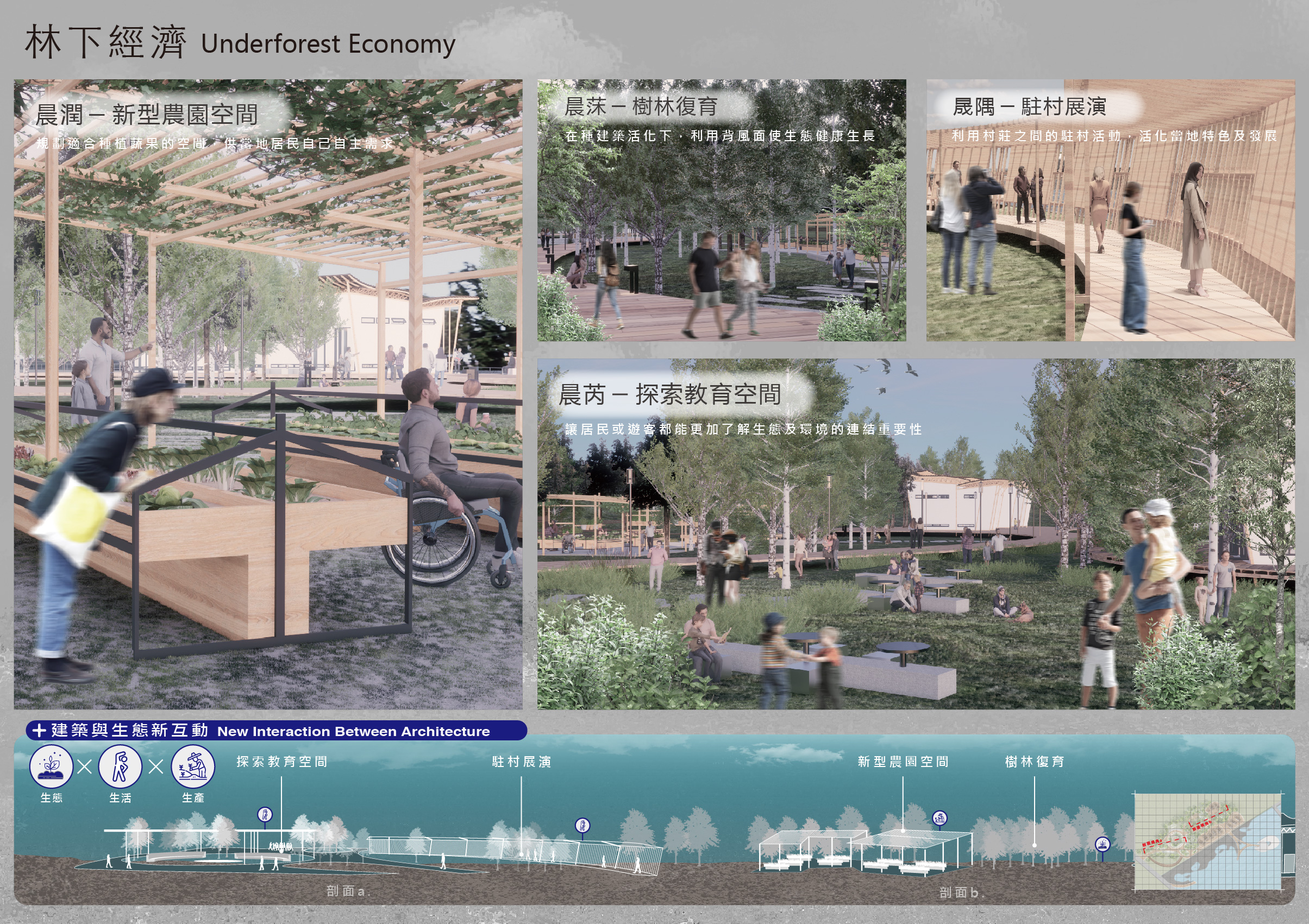
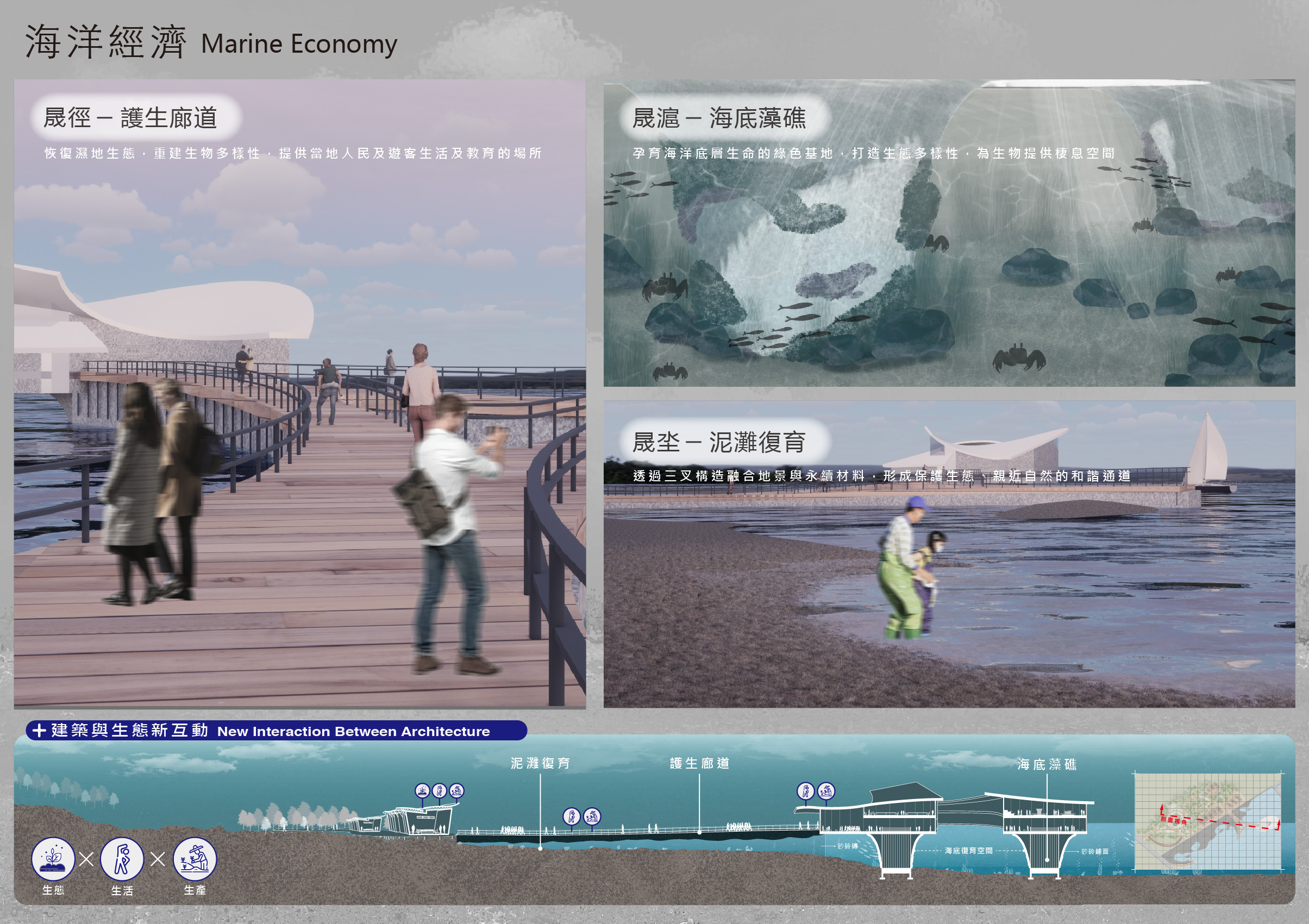
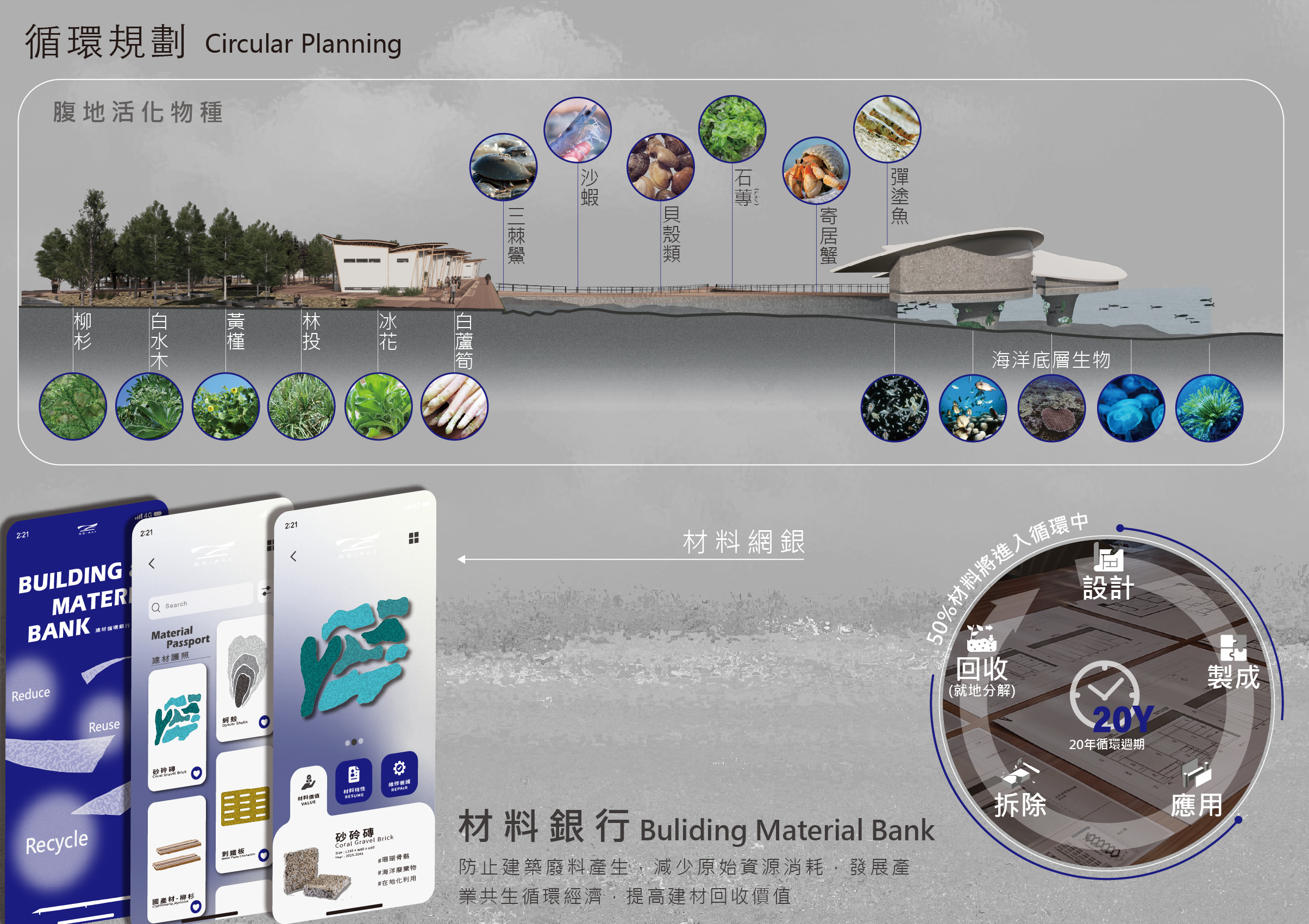
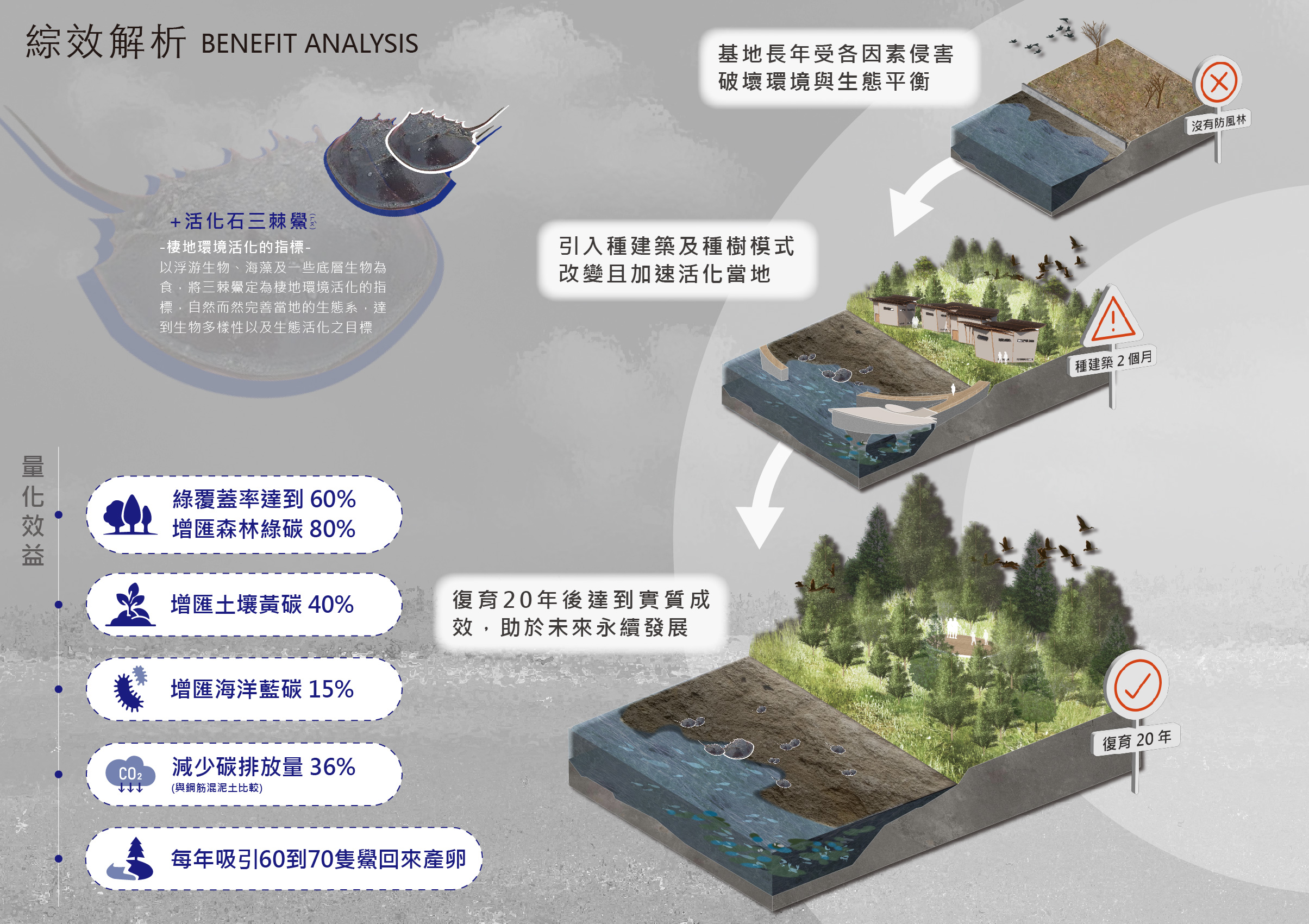
使用生態醫生角度介入,讓模組化建築成為環境的治癒者打造生態、生活、生產共生的恢復機制並永續發展,分析澎湖縣湖西鄉成功村基地問題設定解決方法,使用在地廢棄物作為循環建材,創造林下經濟結合當地創生活動,恢復自然生態、共築永續未來。
當地腹地破壞的範圍分為陸域、濕地及海洋。
陸域長年土壤鹽鹼化加上當地氣候嚴峻天氣炎熱,形成植物生長不易,透過土壤重構、種建築及防風林建築的功能形式來降低風速,以利於背風面造林,活化生態,為當地創造新型農園空間、推動環境教育、活躍人潮並於當地帶來林下經濟,促進生活健康及環境發展。
濕地和海洋在當地是重要的資源,但隨著開墾的破壞,原有的自然生態也逐漸消失甚至滅絕。因此透過三叉養灘工程使泥灘保留,恢復當地活化石三棘鱟棲息地,海洋建築基腳外牆使用砂砱循環材料形成天然藻礁復育空間,創造海洋底層生物的棲息地,也為海洋品質帶來更好成效。
綜效解析:
1.增加土壤黃碳、海洋藍碳,提高綠植覆蓋率至60%,降低地表溫度。
2.種建築創造多元空間發展林下經濟恢復生態鏈,使人與自然達到互助及永續目標。
3.透過自然復育辦法活化生態棲息地,使三棘鱟及原有生物回歸。
4.改善並提升建材循環性,減少碳足跡及廢棄物產生。
From the perspective of an ecological doctor, modular architecture is utilized as an environmental healer to create a restorative mechanism for the coexistence of ecology, life, and production, promoting sustainable development. This approach analyzes the issues and solutions for the site in Chenggong Village, Huxi Township, Penghu County. It uses local waste as circular building materials to create forest-understory economies, combined with local creative activities, to restore the natural ecology and jointly build a sustainable future.
The local land degradation is divided into three categories: land, wetlands, and ocean.
On the land, long-term soil salinization, coupled with the harsh local climate and high temperatures, makes plant growth difficult. Through soil reconstruction, the incorporation of plant-based architecture, and windbreak forest construction, wind speed is reduced to facilitate afforestation on the sheltered side, revitalizing the ecology. This creates new farming spaces, promotes environmental education, attracts people to the area, generates a forest-understory economy, and fosters health and environmental development.
Wetlands and oceans are important local resources, but their natural ecosystems have gradually disappeared or even become extinct due to the destruction caused by reclamation. Therefore, the Trident Tidal Flat Restoration Project helps preserve the mudflats and revitalizes the habitat of the local Tachypleus tridentatus, a living fossil. The marine architectural foundation walls use sand-lime recycled materials to form natural algal reef restoration spaces, creating habitats for marine bottom-dwelling organisms and improving marine ecosystem quality.
Comprehensive Effect Analysis:
1. Increase soil yellow carbon and marine blue carbon, enhance plant coverage to 60%, and reduce surface temperatures.
2. Use plant-based architecture to create diverse spaces that develop the forest-understory economy and restore ecological chains, achieving mutual assistance and sustainability between humans and nature.
3. Revitalize ecological habitats through natural restoration methods, allowing the return of Tachypleus tridentatus and other native species.
4. Improve and enhance material recyclability, reducing carbon footprints and waste generation.